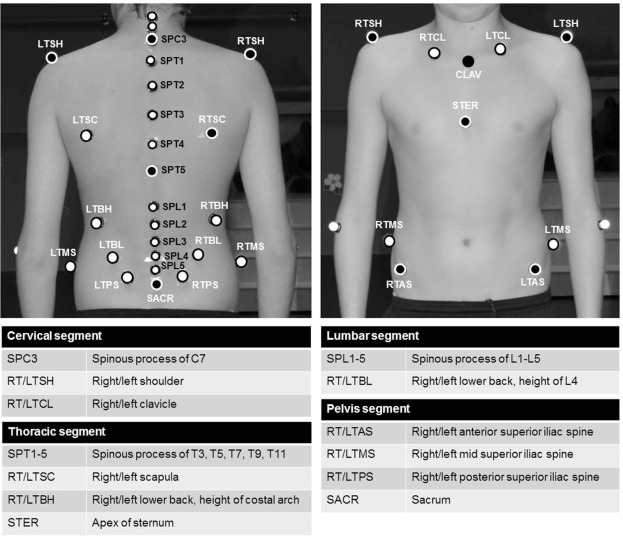Spinal kinematics
Spinal kinematics during gait in healthy individuals across different age groups
Highlights
- Lordosis and kyphosis increase throughout adolescence and peak in adulthood.
- Older individuals did not present excessive thoracic kyphosis.
- Adults displayed increased external page lumbar spine frontal motion compared to adolescents.
- Increased frontal plane motion in older individuals related to higher external page gait speeds.
- Data can serve as basis for future investigations on spinal pathologies.
- The Data can be downloaded directly on the LMB datarepo

Abstract
Most studies investigating trunk external page kinematics have not provided adequate quantification of spinal motion, resulting in a limited understanding of the healthy spine’s biomechanical behavior during external page gait. This study aimed at assessing spinal motion during gait in adolescents, adults and older individuals.
Fourteen adolescents (10–18 years), 13 adults (19–35 years) and 15 older individuals (≥65 years) were included. Using a previously validated enhanced optical motion capture approach, sagittal and frontal plane spinal curvature angles and general trunk kinematics were measured during shod walking at a self-selected normal speed.
Postural differences indicated that lumbar lordosis and thoracic kyphosis increase throughout adolescence and reach their peak in adulthood. The absence of excessive thoracic kyphosis in older individuals could be explained by a previously reported subdivision in those who develop excessive kyphosis and those who maintain their curve. Furthermore, adults displayed increased external page lumbar spine range of motion as compared to the adolescents, whereas the increased values in older individuals were found to be related to higher gait speeds. This dataset on the age-related kinematics of the healthy spine can serve as a basis for understanding pathological deviations and monitoring rehabilitation progression.